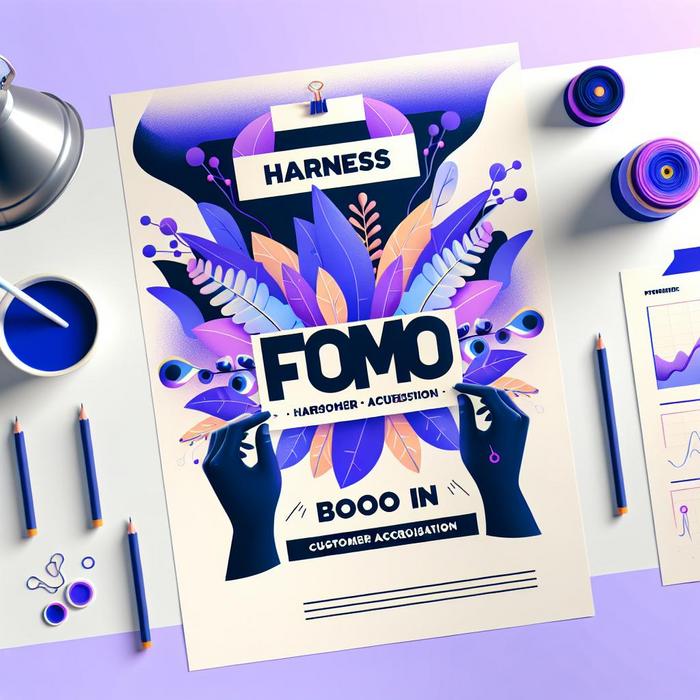Understanding Customer Acquisition and Retention
What is the difference between customer acquisition and retention? Is there one that’s more vital for your business than the other? While many businesses focus primarily on customer acquisition, a balanced approach that embraces both acquisition and retention can make a significant difference to your bottom line.
According to a post on Retention.com, acquiring a new customer can cost up to five times more than retaining an existing one. This is where value-based optimization strategies come in handy. By reducing churn rates and boosting customer retention, organizations can maximize their customer lifetime value.
Maximizing Customer Lifetime Value through Value-Based Optimization
How significantly does Value-Based Optimization influence customer lifetime value? Adopting an approach that seeks to create a real, quantifiable value for your customers can pave the way to substantial financial results.
An article on Retention.com explains how understanding and implementing practices that boost Customer Lifetime Value (CLV) can introduce exponential increase in revenue.
At Customer Lifecycle, we advocate for value-based optimization as a key strategy in increasing CLV. By tailoring your products and services to offer substantial value to your customers, you can secure their loyalty and draw in a steady stream of revenue in the long-run.
Boosting Customer Acquisition Through FOMO Marketing Tactics
Are you familiar with the power of Fear of Missing Out, better known as FOMO, in driving customer acquisition? FOMO is a powerful marketing strategy that leverages the innate human desire not to miss out on an opportunity.
A compelling feature on Benamic dives deep into the potential of FOMO and how you can harness it to engage customers and boost sales.
When coupled with value-based optimization, FOMO can skyrocket your customer acquisition rates, bringing a fresh influx of loyal consumers and propelling your brand to new heights.
The Power of Proactive Analytics and Tailored Touchpoints
Could your business benefit from proactive analytics and better-managed customer touchpoints? By actively analyzing data and carefully managing customer touchpoints, your business can provide a superior customer experience, fortify customer relationships, and subsequently drive CLV.
Learn more about this powerful combination at Customer Lifecycle and Customer Lifecycle.
Integrating Marketing Automation for Value-Based Optimization
Have you considered implementing marketing automation to streamline your value-based optimization tactics? By automating your marketing processes, you can efficiently target customer segments and personalize your value-based offerings.
Remember, to optimize and maximize CLV, we must harmonize the pitches of value-based optimization, data-driven marketing, customer retention, and customer acquisition. By systematically and strategically utilizing these elements, businesses can ascend to new echelons of success and customer satisfaction.
Understanding FOMO in the Business Context
The Fear of Missing Out (FOMO) is a powerful psychological state that compels consumers to act decisively, driven by the fear that they might miss out on rewarding opportunities. Smart businesses have begun harnessing FOMO to boost acquisition, honing in on this urgency to energize marketing strategies. FOMO, while not a new trend in marketing, is indeed in a fascinating phase of resurgence.
Creating Urgency Through FOMO in Value-Based Optimization
In employing the concept of FOMO, it’s crucial to consider customer lifetime value optimization. All marketing efforts, including FOMO-based strategies, should focus on enhancing the lifetime value of customers. This essentially means prolonging customer engagement with the brand, multiplying transaction frequency, increasing average order sizes, and acquiring customers with a higher propensity of loyalty.
Understandably, value-based optimization is fundamental for effective FOMO-based strategies. By tailoring offers and experiences around individual customer’s perceived values, marketers can fuel FOMO in a relevant, personalized manner, influencing purchasing decisions and driving higher customer acquisition rates. Case in point: personalizing discounts or offers on items that a customer frequently shops for can heighten the customer’s FOMO feelings, encouraging them to complete the purchase.
Value-Based Optimization intersects with Customer Retention
Value-based optimization does not end with customer acquisition – it extends to customer retention as well. It’s about transforming one-time customers into loyal patrons and gaining incremental business value over time. Retaining customers often requires updating messaging strategies and adapting to ever-changing needs, interests, and, more importantly, fears – ensuring they do not miss out on what the brand has to offer them.
By strategically placing a sense of urgency to the offers, marketers can create a powerful drive to purchase now rather than later. This again harnesses FOMO to not only acquire customers but to keep them coming back for more.
Our Customer-Lifecycle’s post prescribes strategies on simplifying complex customer experiences where you can notice the seamless amalgamation of acquisition and retention strategies.
The Role of Data-Driven Strategies
While these exciting tools are within reach, utilizing them efficiently comes with knowing your customers better – understanding their preferences, behaviors, and fears. This is where data-driven marketing strategies come into play.
Data-driven strategies enable businesses to learn from past and current customer interactions, preferences, and behaviors to guide their strategies. This ensures that FOMO is ignited for the right customers, at the right time, through the right channels.
Seizing Opportunities for Enhanced Customer Relationships
Harnessing FOMO is about exploiting every opportunity to enhance customer relationships. It’s about amplifying the influence of FOMO, not through manipulative tactics that can hurt the customer relationships in the long run, but by adding tangible value that creates a strong and lasting bond with customers.
Optimizing value throughout the customer lifecycle isn’t just about the financial aspect, but also about creating satisfying experiences that resonate with customers and make them feel valued.
Our post on insights into enhancing customer acquisition provides more about the significance of boosted customer relationships for successful acquisition strategies.
In conclusion, harnessing FOMO to boost customer acquisition, while grounded in psychological pathways, greatly benefits from the disciplined application of value-based optimization. It’s about creating a mutually beneficial cycle of value creation and capturing, ensuring lengthy engagement and a perennial river of revenues.

